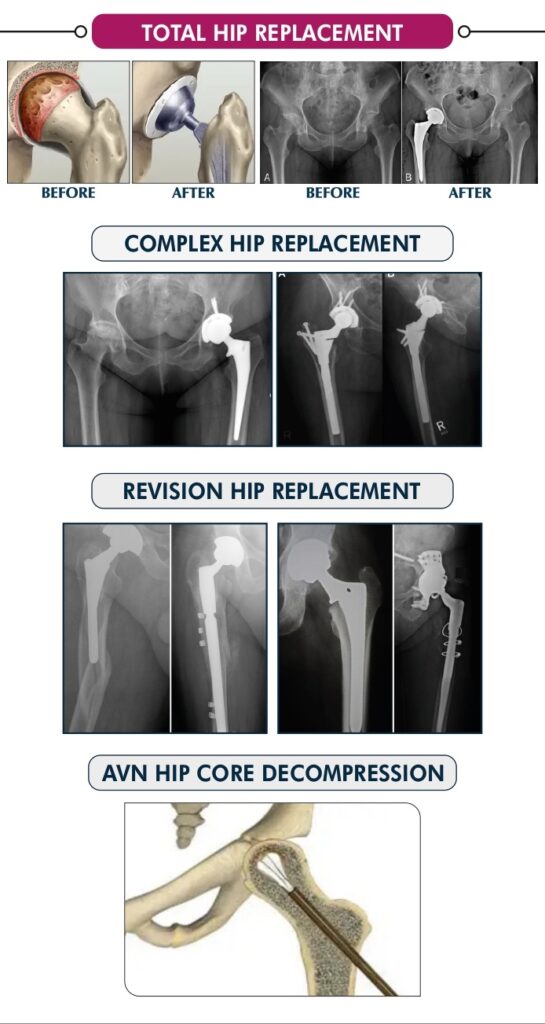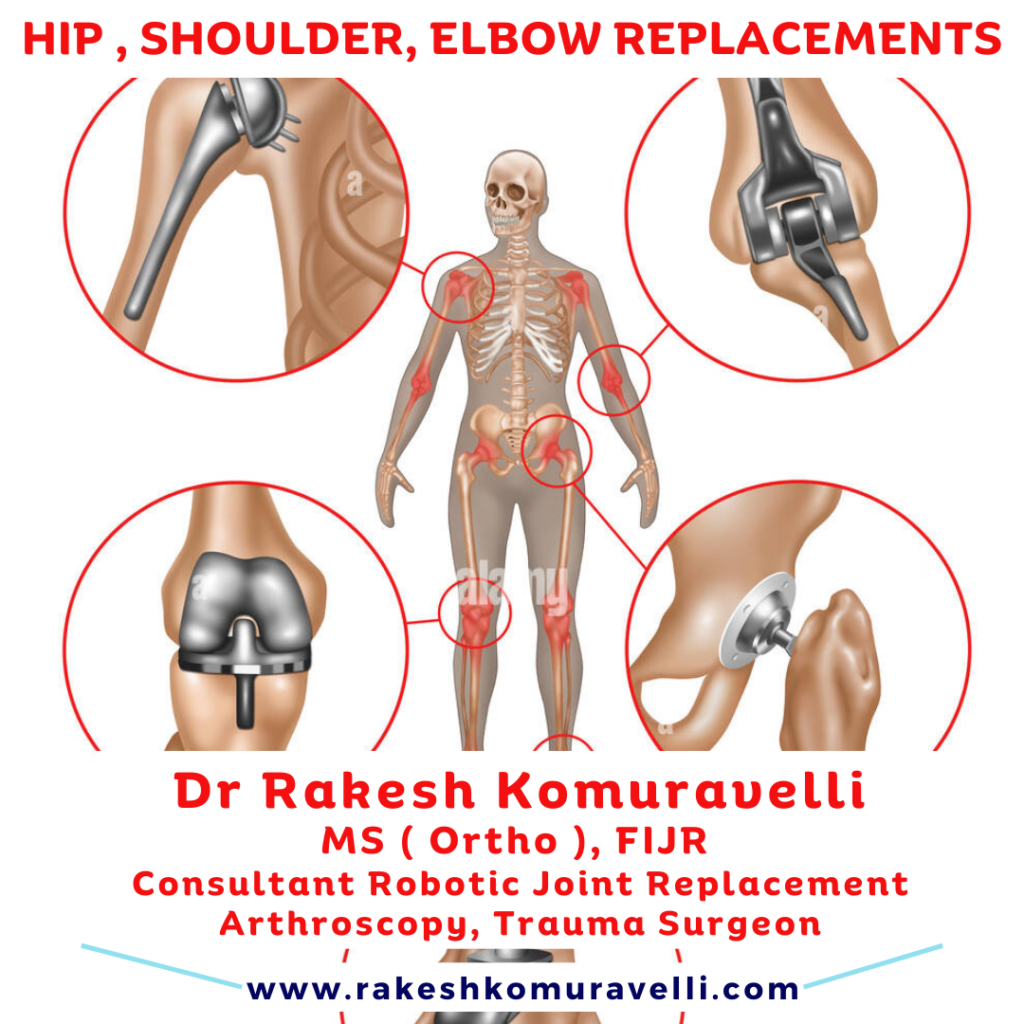


Hip, shoulder, and elbow replacements are surgical procedures that involve removing a damaged joint and replacing it with an artificial joint made of metal, plastic, or ceramic components. These procedures are typically recommended when a joint has become severely damaged due to injury, arthritis, or other degenerative conditions, and conservative treatment options have failed to provide adequate relief.
Hip Replacement: A hip replacement involves replacing the damaged hip joint with an artificial joint made of metal and plastic components. This procedure is typically recommended for patients who have severe hip pain, stiffness, or difficulty walking due to conditions such as osteoarthritis, rheumatoid arthritis, or a hip fracture.
During the procedure, the surgeon will remove the damaged joint and replace it with an artificial joint that is designed to mimic the natural movement and function of the hip joint. This can help reduce pain, improve mobility, and restore overall quality of life for many patients.
Shoulder Replacement: A shoulder replacement involves replacing the damaged shoulder joint with an artificial joint made of metal and plastic components. This procedure is typically recommended for patients who have severe shoulder pain, stiffness, or difficulty moving their arm due to conditions such as osteoarthritis, rheumatoid arthritis, or a rotator cuff tear.
During the procedure, the surgeon will remove the damaged joint and replace it with an artificial joint that is designed to mimic the natural movement and function of the shoulder joint. This can help reduce pain, improve range of motion, and restore overall quality of life for many patients.
Elbow Replacement: An elbow replacement involves replacing the damaged elbow joint with an artificial joint made of metal and plastic components. This procedure is typically recommended for patients who have severe elbow pain, stiffness, or difficulty bending their arm due to conditions such as osteoarthritis, rheumatoid arthritis, or a previous injury.
During the procedure, the surgeon will remove the damaged joint and replace it with an artificial joint that is designed to mimic the natural movement and function of the elbow joint. This can help reduce pain, improve flexibility, and restore overall quality of life for many patients.
While hip, shoulder, and elbow replacements can provide significant relief for many patients, these procedures are not without risks. Some potential risks and complications of joint replacement surgery include infection, blood clots, nerve damage, and joint dislocation. Your surgeon will discuss the risks and benefits of joint replacement surgery with you before recommending a course of treatment.
Hip replacement surgery is a surgical procedure in which a damaged or worn-out hip joint is replaced with an artificial joint, also known as a prosthesis.
Candidates for hip replacement surgery are typically those who are experiencing chronic hip pain and stiffness due to conditions such as arthritis or injury, and have not found relief from other treatments.
Benefits of hip replacement surgery include reduced pain, improved mobility, and an improved quality of life.
Recovery after hip replacement surgery typically involves a period of physical therapy and rehabilitation to help restore strength and range of motion in the hip joint. Most patients are able to resume normal activities within a few weeks to a few months following surgery.
As with any surgical procedure, there are risks associated with hip replacement surgery, including infection, blood clots, nerve damage, and allergic reaction to anesthesia.
Shoulder replacement surgery is a surgical procedure in which a damaged or worn-out shoulder joint is replaced with an artificial joint, also known as a prosthesis.
Candidates for shoulder replacement surgery are typically those who are experiencing chronic shoulder pain and stiffness due to conditions such as arthritis or injury, and have not found relief from other treatments.
Benefits of shoulder replacement surgery include reduced pain, improved mobility, and an improved quality of life.
Recovery after shoulder replacement surgery typically involves a period of physical therapy and rehabilitation to help restore strength and range of motion in the shoulder joint. Most patients are able to resume normal activities within a few weeks to a few months following surgery.
As with any surgical procedure, there are risks associated with shoulder replacement surgery, including infection, blood clots, nerve damage, and allergic reaction to anesthesia.
Elbow replacement surgery is a surgical procedure in which a damaged or worn-out elbow joint is replaced with an artificial joint, also known as a prosthesis.
Candidates for elbow replacement surgery are typically those who are experiencing chronic elbow pain and stiffness due to conditions such as arthritis or injury, and have not found relief from other treatments.
Benefits of elbow replacement surgery include reduced pain, improved mobility, and an improved quality of life.
Recovery after elbow replacement surgery typically involves a period of physical therapy and rehabilitation to help restore strength and range of motion in the elbow joint. Most patients are able to resume normal activities within a few weeks to a few months following surgery.
As with any surgical procedure, there are risks associated with elbow replacement surgery, including infection, blood clots, nerve damage, and allergic reaction to anesthesia.

